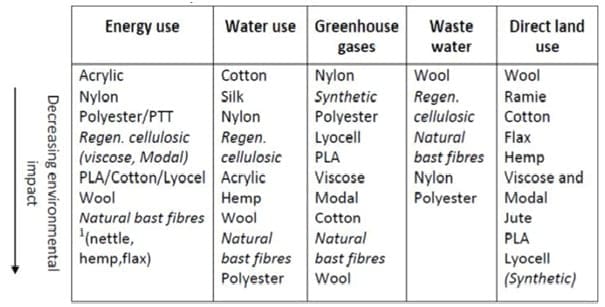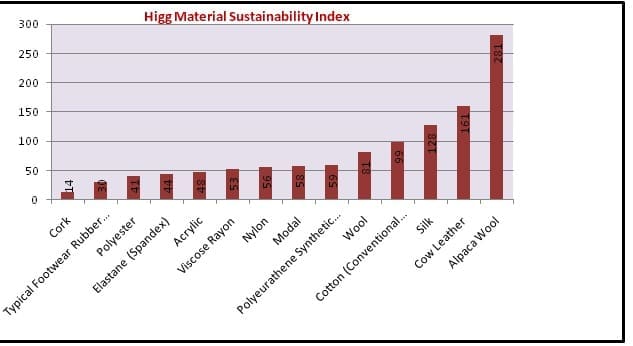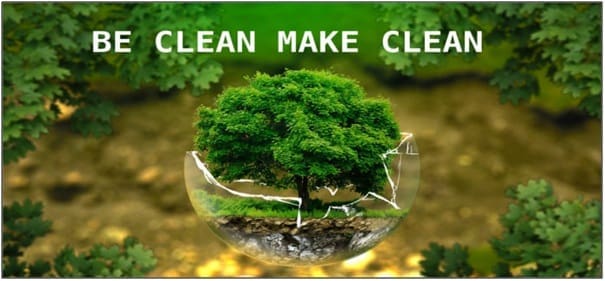ENVIROMENT FRIENDLY TEXTILES (PART-2)
In previous paper, we learnt about pollution, pollutants, source of pollutants and impact on environment & human life. Today, let us discuss about how to reduce pollution. There are two ways to reduce pollution level
- Treat pollutants correctly before release in to atmosphere
- Control usages during manufacturing process by selection of right chemical, process that too with optimum usage.
It is always better to avoid usages of toxic chemicals during production activity than end of the pipe treatment. Scientifically, this method is known as CMS (Chemical Management System).

Chemical Management System (CMS)
To avoid the usage of these RSL / MRSL one must adopt chemical management system (CMS)The Textile Supply Chain is composed of several tiers as we go down the ladder from the consumer to the fibre manufacturer. Across this stream, chemicals are used at different stages. Maximum use of chemical and therefore risks – is in the processing section i.e. the garment laundries and the fabric dye-house (Fig. )
It is essential to manage the chemicals with proper understanding right from purchase, usages & up to disposal.
Looking towards seriousness of subject & need of an hour, CMS is developed. There are many consultants who work on CMS & guide industries for better outputs by reducing NPO’s.
Objectives of CMS
Quality &Environmental performance of end product
Compliance to statutory prescribed norms
Improvements in Productivity.
Advantages of CMS
Cost savings
Improve quality of end product
Compliance in outputs (Product & effluents)
Saving in consumption of water & Energy
Reduce accidents & improves Health & Safety
How to Implement CMS
Basic steps for implementation of CMS are as under
Commitment from TOP management – Generate CMS policy
Develop a team for implementation
Development of CMS Policy
Define responsibilities & authorities of each team member
Define chemical selection procedure
Identify hazard of each chemical & make safety procedures for storage, handling & disposal of same.
Strictly follow safety instructions mentioned in MSDS for transport, storage & handling in mill.
Strictly follow local & national rules & regulations while storage, use & disposal of any chemical.
Standardize procedure of testing of raw material, finished product & waste generated during process
Training to CMS team & work force
Development of MIS System – Daily / Monthly check points & reporting system to Top Management
Self-grading system for future self-assessment.

Few Examples for action
- Reduce chemical consumption by automation (pH control, Temp control, etc…)
- Use of Enzyme base technology in pre-treatments.
- Techniques to Reduce Salt consumption
- Replace Soda ash by Liquid alkali
- Know chemicals & its parameters for application
- Reuse Water (standing bath technique, Counter current washing)
- Water from Pre-treatments to be reused in to other baths like desizing.
- Salt from Dye bath drain by Nano filter technology
- Heat from Heat Recovery Unit
- Water by using Vacuum slit instead of regular squeezing for better squeezing
- Caustic recovery from mercerize wash liquor
- PVA recovery system.
- Reuse of cooling water at various stages of processing (Cooling water from sanforise), Cooling towers etc….
- Single bath dyeing of PC blends for selective shades
- Use of Low salt dyes.
- Reduce (MLR) Material to Liquor Ratio by various techniques
- Replace overflow rinse by normal washes.
- Use of standing bath for finishing.
- Auto dosing system for chemicals/ Exact weighing of chemicals before actual use
- Use of laser techniques in place of Potassium Permanganate in denim washing (fading)
Ecological foot print of various textile end products
As we know textile is basic need of human & used in various forms like woven fabrics, knitted fabrics, non-woven fabrics etc… They are made from various fibres like- Cotton, viscose, Jute, Linen, Hemp, bamboo, Modal, Ramie…….. Polyester, Acrylic, Nylon Spandex, Rubber, Wool, Silk, Gold, Silver, Steel, , Carbon

All these categories are ultimately used by us in day to day activities. Different fibres are developed & used as per suitability of end products.
The ecological footprint (EF) is an indicator to evaluate the sustainability and environmental performance of textile processes and products. Climate change is a key environmental challenge of our time. Eco footprint is a key environmental accounting tool for business managers, policy makers and non-governmental organisations attempting to identify mitigation measures that reduce the threat of climate change. The textile industry is increasingly engaged in ecological footprint In order to evaluate impact of textile product on environmental aspects; one must consider the facts as under
| Stages – Life cycle of Textile product | Consumption of Natural resources | Use & Release of Harmful pollutants (Hazards) | Bio Degradability after use | ||||
| Water | Fuel | Power | Water bodies | Soil | Human Health | ||
| Fibre Production | |||||||
| Processing | |||||||
| Garmenting | |||||||
| Packing | |||||||
| Transportation | |||||||
| Distribution | |||||||
| During use | |||||||
| Disposal | |||||||
Carbon footprint: Today and Tomorrow
Today, textile production is the world’s third most polluting industry after the leather & paper industry. The total greenhouse gas emissions from textile production currently stands at 1.2 billion tonnes annually and this is more than those of all international flights and maritime shipping combined. It is estimated that the fashion industry is responsible for 10 per cent of the global carbon emissions. Manufacturing hubs China and India will increase the footprint further. More than 60 per cent of textiles are used in the clothing industry and a large proportion of clothing manufacturing occurs in China and India, countries which rely on coal-fuelled power plants, increasing the footprint of each garment.
Increasing appetite for fast and disposable fashion
Polyester and cotton are the two most commonly used fabrics in the industry and their production has a considerable ecological impact. Amongst these, a polyester production result in more emissions since it is produced from crude oil also consumes more energy & power during production. Moreover, bio-degradability of used polyester garment is quite high compared to that of natural fibre.
According to estimates, 262 per cent more CO2 is emitted to produce a single polyester T-shirt than a cotton shirt. Moreover, it is further more harmful to environmental aspects due to its non bio-degradable nature. Cotton is a natural fibre & its self-degradation property is less harmful nature. Now, looking towards polyester’s sustainable property, it can be easily recycled & ultimately, it reduces the adverse impact on nature. But unfortunately, recycling of garments is not acceptable by users. Figures say that, that, the average number of times a garment is worn before it ceases to be used—has decreased by 36 per cent compared to 15 years ago. After use, less than 1 per cent of the material used to produce clothing is recycled into new clothing. It is time to adopt recycling of textile we use.While considering natural fibres, one can always compare environmental impact (Carbon dioxide and GHG emission) during the production and use of garment. To reduce such adverse impacts on human & atmosphere, one need to domodification in process (Chemical & procedure) by reducing consumption of hazardous chemicals & natural resources. Toxic dyes and chemicals used in wet processing of textiles, which are coming in contact with the skin and causing a direct damage to the health like skin cancer, allergy etc. The elimination of hazardous solvents is one of the prime concerns of eco-friendly chemistry.
One can adopt green technologies like
- use of enzymes in wet processing,
- Reuse of water (popularly known as water recycling),
- Eco-friendly auxiliaries,
- Single step desizing, scouring and bleaching,
- Elimination of carcinogenic dyes and pigments,
- Use of low salt – high exhaustion reactive dyes,
- Use of low MLR equipments for processing,
- Supercritical fluid dyeing (using liquid Carbon dioxide),
- Recycling system for organic solvent used in textile pigment printing,
- Avoiding phthalate base pigments in printing,
- Digital printing, heat transfer printing,
- Formaldehyde free finishing and bio-polishing
These are some of the advance processes consuming lesser energy & eco-friendly chemicals thereby providing a safer and sustainable environment , which gives satisfied customer experience.
Wet treatment of textiles like de-sizing, prewashing, mercerizing, dyeing, printing etc. includes a lot of chemical applications on the fibres. Water is used at every stage in fabric manufacturing process application of chemicals, – wash and rinse out those same chemicals to make product ready for next process. Some fibres need to be bleached with chlorine before dying. This causes release of organo-chlorine compounds in the atmosphere, which are very dangerous to the environment. Generally textile product consumes lot of chemicals (Normally, It takes between 20% and 60% of the weight of the fabric) to produce end product. During the process of wet treatment, huge quantity of fossil fuels is consumed which have carbon content and react with oxygen to form carbon dioxide. This results in acidification, fossil fuel depletion and ultimately global warming. Fabrics take a lot of energy to produce fabrics.

A systematic approach including a continuous improvement process can reduce the carbon footprint of textiles. Companies will realize how they can benefit from increasing energy efficiency and thus cutting costs for fuel and electricity. In fact, it can be a triple wins for the textile retailer, supplier and the environmental sustainability can be achieved by looking at the full life cycle of our clothing. Adoption of 3 R concepts is now old one & one must add 4th R & follow 4 R concepts.i.e. Reduce, Reuse, Recycle& Research.
- Reduce: Low carbon foot print processes cut costs by reducing waste of raw materials and energy. Water and energy usage reductions by the textile dyeing and finishing sector can help reduce global carbon dioxide emissions. By saving energy and water, the textile industry can not only save a lot of money, but also help to slow down climate change. The textile industry needs to adopt more energy efficient processes & chemicals. Eco-efficient processes for textile mills can save costs of production and also help to reduce the environmental burden.
- Reuse: Industry can reuse water, energy & chemicals from drains. This will help in reduction of production costs.
- Recycle :One can always think to recycle water after proper treatment back to process. Many new technologies have been developed to recycle Salt, PVA from size, Caustic from mercerise wash liquor. This will reduce consumption of fresh water & chemicals & ultimately can reduce environmental burden. Used textile material can be converted back into yarn & can generate melange yarn. Same yarns can be re-dyed & produce fresh garments at half the rates. Plastic bottles can be recycled to produce fibre & used in geo-textiles. Even waste garments (manmade fibre) can be recycled back to make roads.
- Research: Educational & research institutes must apply brain on research activity by environmental burden can be reduced. (Super critical Carbon dioxide process for polyester dyeing, salt less dyeing of reactive dyes are good examples).
Let us try to understand eco friendly apparel which serves our purpose of clothing with less or no harm to environment. How do we calculate the impact of a particular garment on environment?
Life cycle assessment & Carbon foot print of clothing
It is calculated with considering below points. This table is generated with consideration of several segments like cotton needs huge water; also pesticides are sprinkled during growth of plant. Similarly, manmade fibre – Polyester or Nylon are produced chemically which is derived from fractional distillation of coal tar this consumes lots of energy, chemicals & water. Ultimately adverse impact to water, air & soil is observed.
In addition to this, it consumes natural resources & chemicals during fabric making, processing, garment making, activities at laundry & lastly disposal to dumping area. Also after dumping, it needs different period for degradation in soil this process consumes natural resources & also pollute atmosphere.
During this cycle, lots of transportation from one state to another takes place which consumes petroleum & impacts on air pollution & also reduces natural resources upto large extant.
Total impact is calculated of various fibres & this is known as Life cycle assessment or Carbon foot print.
The Sustainable Apparel Coalition (SAC) has updated its Higg Materials Sustainability Index (Higg MSI), This is a tool which attempts to help the apparel, footwear, and textile industry to assess the environmental impact of materials used in global manufacturing. The Higg MSI now features 80 base materials, including cotton, polyester, and silk. We will discuss on certain fibres which are widely used.

Nike MSI examines materials from the beginning, the origin of raw materials, to the finished textile or component part. Nike MSI looks at both naturally sourced (plant, animal or mineral based) and synthetic (fossil fuel / Petroleum based) materials. The higher scores indicate more sustainable materials.
MSI balances scoring based on three categories of points. The three categories include base material score, material environmental attributes, and supplier practices. The base material score takes into account all publicly disclosed LCA (Life Cycle Assessment) studies, industry reports and supplier derived information. The material environmental attributes looks at different dimensions including green chemistry, recycled and organic content, water conservation, and blending or composting. Supplier practices examine the best practices within a specific supply chain. In more detail, it looks at testing performance in Nike’s Restricted Substance List Program, Water Program, and Energy and Carbon Program. Nike MSI gives negative points to supplier practices if a supplier fails to comply with basic environmentalstandards.This scoring framework evenly weights four different environmental impact areas.
These areas include –
- Chemistry,
- Energy and greenhouse gas intensity,
- Water and land use intensity,
- Physical waste – disposal
| Segment | Focused on |
| Chemistry | Human health hazard evaluations for carcinogenicity, acute toxicity, chronic toxicity, and reproductive toxicity and endocrine disruption. |
| Energy &
Green house gas intensity |
Global warming, acidification, and human and eco-toxicity. Energy intensity and GHG intensity. It includes primary process during production energy along with transportation. |
| Water & Land use intensity | Primary process water (e.g. irrigation for agricultural crops) and amount of bio-based raw material produced per hectare of land. |
| Physical waste & Disposal | Waste generated from raw material to finished product. The main categories of physical waste include hazardous, municipal solid waste, industrial, recyclable /compostable and mineral. |
The Higg Index Product Tools are used during the design and materials selection stages of production to assess a product’s sustainability impacts; they also assess a product’s lifetime sustainability impact. Higg Product Tools offer brands and manufacturers information to make better choices at every stage of a product’s development. In terms of sustainability scoring, polyester is the highest ranked material in the scoring system – despite ongoing concerns about micro fibre pollution & also its bio-degradability –Where as Leather & wool ranked lowest in the system. Conventionally grown cotton also scores poorly; Organic cotton has an improved status. Several brands like Nike also have worked on sustainability index & their work is helping garment designers to develop new fashion trends with less impact on atmosphere.
Higg MSI assesses a material’s environmental performance and scores the results. Calculations account for energy, water, chemistry, and additional impacts used in material production, with the aim of giving designers greater insight in creating more sustainable apparel.
The higher scores indicate more sustainable materials.
Looking towards above chart, one can decide his contribution to environmental aspects & consume garment.


